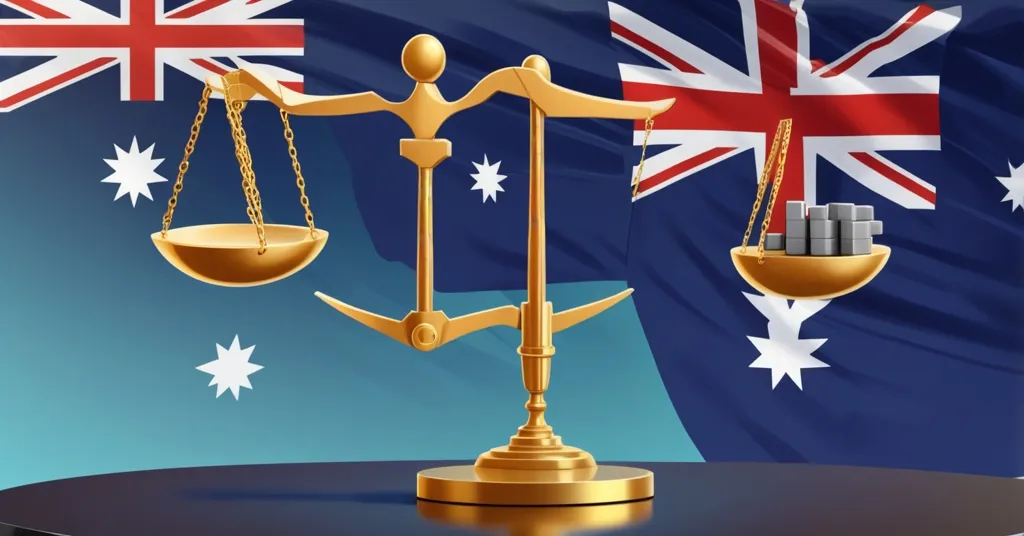Australia’s New Crypto Framework: Balancing Innovation and Consumer Protection

Australian Government Unveils New Crypto Regulatory Framework: Balancing Innovation and Consumer Protection
The Australian federal government, led by Prime Minister Anthony Albanese, has introduced a groundbreaking digital asset regulatory framework aimed at fostering innovation while prioritizing consumer protection. This move signals a significant step towards integrating digital assets into the nation’s financial system.
- New framework extends financial services laws to digital asset platforms and stablecoins
- Smaller-scale firms not involved in financial services are exempt
- Opportunities identified in tokenization, real-world assets, and CBDCs
- Public consultation on draft legislation expected later this year
Key Aspects of the Australian Digital Asset Framework
The Australian government’s new digital asset framework extends existing financial services laws to key digital asset platforms, payment stablecoins, and related services. This approach, as Assistant Treasurer Stephen Jones points out, recognizes the vast potential of digital assets and blockchain technology for the economy, financial sector, payments industry, and capital markets.
“Our legislative reforms will extend existing financial services laws to key digital asset platforms, but not to all of the digital asset ecosystem.”
While the framework is comprehensive, it also exempts smaller-scale firms not involved in financial services from obtaining an Australian Financial Services Licence. This nuanced approach echoes regulatory strategies in the European Union and Singapore, balancing innovation with consumer protection.
Opportunities and Challenges
The government has identified several key opportunities within the digital asset sector, including tokenization, real-world assets (RWAs), and central bank digital currencies (CBDCs). Tokenization can be thought of as turning a piece of real estate into a digital certificate on a blockchain, allowing for more flexible and secure ownership and trading. Real-world assets are tangible items like art or property that are tokenized, while CBDCs are digital currencies issued by a central bank, akin to a digital version of the Australian dollar.
However, the crypto space isn’t all sunshine and rainbows. It’s rife with risks, from scams to market volatility. The government’s challenge is to navigate these complexities without stifling innovation. While the focus on CBDCs and tokenization is forward-looking, the approach to smaller firms raises questions about consumer protection. It’s a delicate balance, indeed.
Collaborative Efforts and Future Outlook
To explore these opportunities further, the Australian Treasury is collaborating with the Reserve Bank of Australia (RBA) to assess the feasibility and potential benefits of an Australian dollar CBDC. Additionally, trials on the use of tokenized money, including CBDCs and stablecoins, are in the planning stages. These trials involve the Australian Treasury, the Australian Securities and Investment Commission, and the RBA.
“We know that digital assets and blockchain represent big opportunities for our economy, financial sector, payments industry and capital markets.”
The government’s approach emphasizes seizing these opportunities and encouraging innovation while ensuring that Australians can use and invest in digital assets safely and securely. The draft legislation outlining these reforms is expected to be released later this year for public consultation, allowing stakeholders to weigh in on the proposed regulatory framework.
Impact on Bitcoin and the Broader Crypto Ecosystem
As champions of decentralization and privacy, it’s worth considering how this framework might impact Bitcoin and other cryptocurrencies. While the framework aims to foster innovation, it’s crucial to monitor how it balances this with the core principles of decentralization and privacy that underpin the crypto revolution. Bitcoin maximalists might argue that any regulation risks stifling the very essence of what makes Bitcoin revolutionary, while others might see it as a necessary step towards mainstream adoption and protection for consumers.
Additionally, the framework’s focus on tokenization and CBDCs could spur innovation in areas like DeFi and NFT marketplaces, filling niches that Bitcoin itself may not serve. It’s a complex landscape, and only time will tell how these regulations will affect the broader crypto ecosystem.
Key Questions and Takeaways
What is the focus of the new Australian digital asset framework?
The framework focuses on fostering innovation while ensuring consumer protection in the digital asset space.
Which entities will the new regulations apply to?
The regulations will apply to digital asset platform operators, exchanges, custody services, and brokerage platforms.
Are all digital asset businesses required to obtain an Australian Financial Services Licence?
No, smaller-scale firms not involved in financial services are exempt from obtaining the licence.
How does the Australian approach compare to other regions?
The Australian approach is similar to the regulatory strategies in the European Union and Singapore.
What opportunities has the Australian government identified in the digital asset space?
The government has identified opportunities in tokenization, real-world assets (RWAs), and central bank digital currencies (CBDCs).
What is the current status of the proposed legislation?
The draft legislation is set to be released later this year for public consultation.
What collaborative efforts are mentioned regarding CBDCs?
The Australian Treasury is working with the Reserve Bank of Australia (RBA) to explore the feasibility of an Australian dollar CBDC.
What trials are planned regarding tokenized money?
Trials on the use of tokenized money, including CBDCs and stablecoins, are planned by the Australian Treasury, the Australian Securities and Investment Commission, and RBA.



